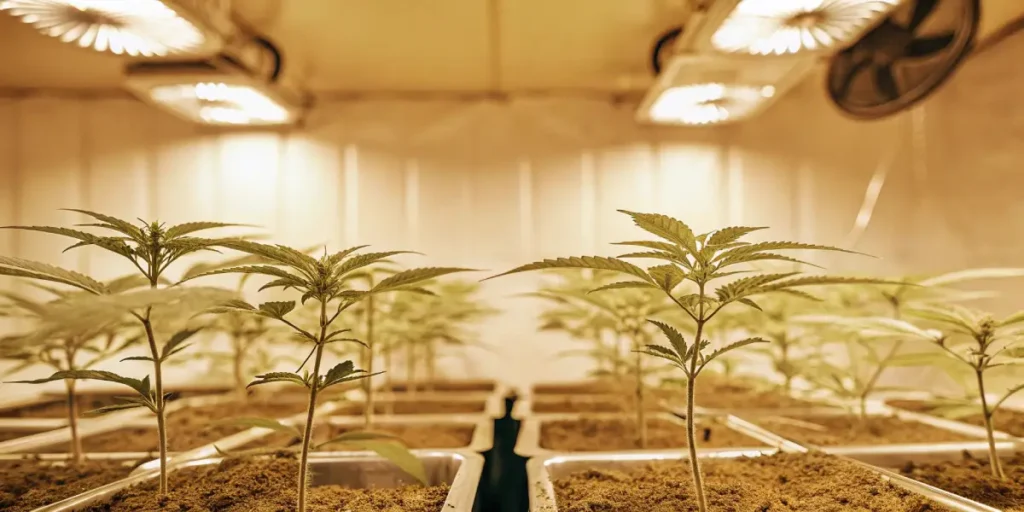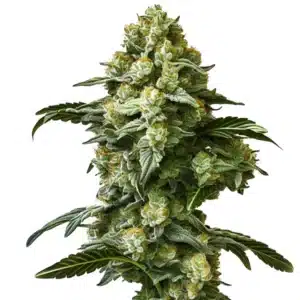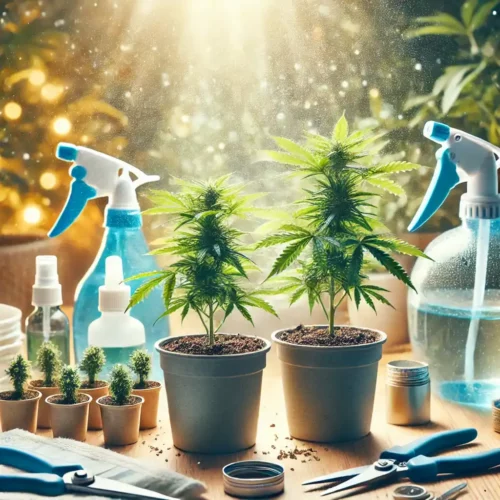Cultivating clones is a fantastic way to ensure genetic consistency and high-quality cannabis plants. While cloning can save you time compared to starting from seeds, it requires specific care, especially in the early stages. In this guide, you’ll find all the steps necessary to grow cannabis clones successfully, whether you’re growing them indoors or outdoors.
What Are Cannabis Clones?
A cannabis clone is a cutting taken from a mature plant, which is then encouraged to develop its own root system. This new plant is genetically identical to its parent. For those learning how to grow a clone from the dispensary, it’s important to know that clones are popular among growers who want to preserve certain traits, such as flavor profiles, yield, or growth patterns, as they are guaranteed to replicate the original plant’s characteristics.
Learning how to grow clones requires attention to detail, especially during the first two weeks, as this is when the cuttings are most vulnerable. With the right care, your clones will grow into strong plants that can produce high yields and excellent-quality cannabis.
Promos & Deals
How to Grow Cannabis Clones – First 15 Days of Cloning Care
The first 15 days are the most critical for clone survival. During this period, the clones are developing roots and adjusting to their new environment. The following measures will help ensure that your clones transition smoothly.
Transplant and Water Immediately
Upon receiving or cutting your clones, it’s essential to transplant them into their final growing medium right away. Watering them immediately after transplanting helps them absorb nutrients and remain hydrated during the critical rooting stage.
- Indoor Clones: Make sure the growing medium is moist but not waterlogged. Overwatering can suffocate the roots, while under-watering can cause dehydration.
- Outdoor Clones: For outdoor clones, ensure the soil is nutrient-rich and retains moisture without becoming too compacted.
Protect the Roots from Light
Roots should always be kept in the dark. Exposure to light can cause them to dry out, which could lead to stress or damage. Use a growing medium like rock wool, soil, or coco coir to keep the roots covered and moist.
- Sign of Healthy Roots: Bright white roots indicate that the clone is healthy and absorbing nutrients properly. Check the roots regularly during the first two weeks to ensure they remain white and moist.
Control Light Intensity
Young clones are sensitive to light, so during the first 15 days, reduce light intensity to help them establish roots without overheating or drying out.
- Indoor Setup: Lower the brightness of your grow lights to around 50% of their usual power. Keep the lights 1-2 meters away from the clones to prevent heat stress.
- Using LEDs: Even if you’re using LED grow lights, which emit less heat, the clones will still need to be kept further from the light source than mature plants.
Reduce Airflow and Turn Off Fans
Fans and strong airflow can dry out your clones’ delicate leaves. During the first two weeks, turn off any fans near the clones or reduce the power of your ventilation system.
- Indoor Tip: Lowering your fan speed by 50% will ensure that there is still air circulation, but not so much that the leaves dry out.
- Avoid Wind Burn: Wind burn can damage clones quickly, so pay close attention to the leaves, ensuring they stay green and firm.
Maintain Proper Humidity Levels
Cannabis Clones thrive in environments with high humidity because, in the early stages, they absorb most of their nutrients through their leaves. Aim for humidity levels between 60-70% to keep the clones hydrated.
- Spraying Leaves: Mist the leaves with water several times a day to maintain moisture levels. This helps the clones absorb water until their roots are fully established.
Keep Temperature Stable
Maintaining a temperature of 20-22°C (68-72°F) is ideal for cannabis clones during the first 15 days. Temperatures higher than this can cause stress and dehydration, while lower temperatures may slow root development.
- Monitoring: Use a thermometer to keep an eye on the grow room’s temperature, making adjustments as needed to stay within the optimal range.
Soak in Disinfectant Solution
Before transplanting, soak your clones in a disinfectant solution. This prevents infections, pest infestations, and ensures the cuttings remain clean and hydrated. A mild hydrogen peroxide solution or a dedicated clone disinfectant works well for this.
Clones in Different Growing Mediums
The medium in which you grow your cannabis clones plays an important role in their success. Here’s a look at the pros and cons of various popular options:
- Soil: Soil is forgiving and easy to use, but it may not be as fast-acting as other media when it comes to root development.
- Coco Coir: Coco coir retains moisture well and provides good aeration for the roots. It’s also environmentally friendly and can be reused.
- Rockwool: Rockwool is a popular medium for clones because it holds moisture and allows for good oxygenation. However, it must be handled carefully to avoid damaging the delicate roots.

How to Grow Cannabis Clones – Outdoor Care for Clones (First 15 Days)
Outdoor cannabis clones, especially those from dispensaries, face additional challenges, such as exposure to wind, sun, and temperature fluctuations. However, with proper care, growing clones from dispensaries can adapt to outdoor conditions and grow into healthy plants.
Keep Clones in the Shade
During the first two weeks, outdoor clones should be placed in a shaded area to protect them from direct sunlight. Overexposure to sun can cause dehydration, stress, and sunburn on the leaves.
- Shading Tips: A shaded porch, greenhouse, or under large trees can provide the right amount of indirect light for the clones to establish themselves without getting burned.
Maintain Soil Moisture
Soil moisture is critical for the early days of outdoor cloning. The soil should be consistently moist but not waterlogged to ensure the roots can take hold without drying out.
- Mulching: Applying a layer of mulch over the soil can help retain moisture and protect the roots from temperature fluctuations.
Shield from Wind
Wind can dry out clones quickly, leading to stress or death. During the first two weeks, protect the clones from strong gusts by placing them in a sheltered location.
- Wind Barriers: Use windbreaks or plant the clones near structures that can block strong winds while still allowing air circulation.
Avoid Early Planting
Outdoor clones are used to 18 hours of light in their previous environments. Planting them outdoors before the end of May can lead to re-vegetation or early flowering. Wait until natural light conditions match their previous environment to ensure a smooth transition.
Regular Leaf Spraying
Like indoor clones, outdoor clones absorb most of their nutrients through their leaves until the roots are established. Spray the leaves with water several times a day to maintain hydration.
- Healthy Leaves: The leaves should remain green, firm, and smooth. If they start to droop or discolor, it could be a sign of dehydration or nutrient deficiency.
How to Grow Cannabis Clones – After the First 15 Days: Ongoing Clone Care
After the critical first 15 days, your cannabis clones will have developed roots and new leaves. They’re now ready for more advanced care as they transition from rooting to vegetative growth.
Gradual Increase in Light Intensity
Once your clones have rooted, you can begin increasing the light intensity to promote stronger growth.
- Indoor Cannabis Clones: Gradually lower the grow lights or increase their brightness over several days to prevent shocking the plants. The optimal light cycle is 18 hours on and 6 hours off.
- Outdoor Cannabis Clones: Slowly introduce outdoor clones to more direct sunlight. Start by exposing them to a couple of hours in the morning sun, and gradually increase the time over the next few days.
Adjust Temperature and Humidity
Clones that have successfully rooted can tolerate slightly higher temperatures and lower humidity levels.
- Temperature Range: Aim for a temperature range of 22-26°C (72-79°F) to encourage vegetative growth.
- Humidity Levels: Reduce humidity slightly to around 50-60%, as the clones will begin absorbing more nutrients through their roots and need less from their environment.
Increase Airflow Gradually
Once the clones have established roots, you can start reintroducing airflow to encourage strong stem growth. Turn the fans back on at a low speed and gradually increase airflow over the next few days.
- Fan Placement: Make sure the fans aren’t too close to the clones to avoid windburn. A gentle breeze will help strengthen the stems without damaging the leaves.
Nutrient Adjustments
Clones that have rooted will now start absorbing nutrients through their roots rather than their leaves. This is the time to begin feeding them with a balanced nutrient solution.
- Indoor Feeding: Use a nitrogen-rich fertilizer to promote healthy vegetative growth. Nitrogen is essential during the vegetative stage to encourage leaf and stem development.
- Outdoor Feeding: For outdoor clones, use a slow-release fertilizer or organic compost to provide consistent nutrients over time.
Watering Practices
As your clones develop roots, adjust your watering routine to focus more on the root zone. Water deeply but allow the soil to dry slightly between waterings.
- Avoid Overwatering: Overwatering can lead to root rot or fungal growth. Make sure the top inch of the soil dries out before watering again.
How to Grow Cannabis Clones – Training Techniques for Growth
Once your clones are growing strong, you can start applying training techniques to maximize their yield and improve light penetration.
Low-Stress Training (LST)
LST involves gently bending the plant’s branches and tying them down to encourage horizontal growth. This technique increases the number of bud sites and improves light exposure to all parts of the plant.
- How to Apply LST: Use soft ties to bend the branches downward, securing them in place without damaging the plant. As the plant grows, adjust the ties to maintain an even canopy.
Topping
Topping clones involves cutting off the top of the plant’s main stem, encouraging the plant to grow more side branches. This creates a bushier plant with more potential colas.
- When to Top: Wait until the plant has at least 4-6 sets of leaves before topping. This ensures the plant is strong enough to handle the stress of topping clones.
How to Grow Cannabis Clones – Harvesting Your Clones
Once your clones have gone through the vegetative and flowering stages, it’s time to focus on harvesting. Proper timing and technique are crucial to ensure you get the best quality buds from your plants. Here’s what you need to know about harvesting your cannabis clones.
When to Harvest
The ideal time to harvest your cannabis plants depends on the strain and growing conditions, but generally, most growers follow these guidelines:
- Trichome Color: One of the best indicators for when your plants are ready for harvest is the color of the trichomes (the tiny, resinous glands on the buds). Using a magnifying glass or jeweler’s loupe, check for trichomes that have turned milky white or cloudy. A small percentage (10-30%) should have amber tips for a more sedative effect.
- Pistil Color: Another sign your clones are ready for harvest is the color of the pistils (the hair-like structures on the buds). When at least 70% of the pistils have turned from white to orange or brown, it’s typically a good time to harvest.
Harvesting Techniques
Harvesting your cannabis clones should be done carefully to avoid damaging the buds or causing unnecessary stress to the plant. Follow these steps for a smooth process:
- Cut the Plants: Use sharp pruning shears to cut the main stems of your plants at the base. Make clean cuts to avoid damaging the stalks.
- Trimming: After cutting the plants, trim the fan leaves (the large leaves without trichomes) to improve airflow and prevent mold during drying. Some growers also trim the sugar leaves (the smaller leaves with trichomes) at this stage, while others wait until after drying to do so.
- Drying: Hang the trimmed plants upside down in a dark, well-ventilated space to dry. The drying process typically takes about 7-10 days. Keep the temperature between 18-22°C (65-72°F) and humidity levels around 45-55% for optimal drying.
- Curing: Once the buds are dry to the touch, remove them from the stems and place them in airtight containers (glass jars work best) to cure. Open the jars daily for the first week to release moisture and prevent mold growth. Curing improves the flavor and potency of your buds and should last 2-4 weeks for the best results.

How to Grow Cannabis Clones – Professional Tips for Growing Clones Like an Expert
For those who want to take their cloning game to the next level, there are several advanced techniques and tips that can help you maximize your yield and the overall quality of your cannabis. Whether you’re a hobbyist looking to improve or a seasoned grower seeking professional results, these tips will elevate your growing process.
Consistent Monitoring
Even small environmental changes can significantly impact the growth of your clones. Here’s how you can maintain consistency in your grow room:
- Temperature and Humidity Sensors: Invest in reliable sensors to constantly monitor temperature and humidity. Fluctuations can stress clones, so maintaining stable conditions is key to healthy plants.
- Automation: Automated systems for watering, lighting, and air circulation can help maintain ideal conditions around the clock without constant manual adjustments.
Optimize Nutrient Feedings
Nutrient management is crucial for maximizing your clones’ growth potential. Use high-quality fertilizers and tailor your nutrient schedule according to the phase of growth:
- Veg Phase: During the vegetative stage, provide your clones with nitrogen-rich fertilizers to support leafy growth and strong stems. Don’t forget to check the pH of your water and nutrient solution (optimal range: 6.0–6.5 for soil; 5.5–6.0 for hydroponics).
- Flowering Phase: In the flowering phase, reduce nitrogen levels and increase phosphorus and potassium to support bud development and density.
Use Supplemental CO2
CO2 enrichment can significantly boost the growth rate and yield of your clones. When used correctly, CO2 supplementation helps plants absorb more light, leading to faster and more robust growth.
- CO2 Levels: Aim to maintain CO2 levels between 1000-1500 ppm in your grow room during the vegetative and flowering stages. Be sure to adjust your light intensity to make the most of CO2 enrichment.
- Safety Precaution: If you’re using CO2 tanks or generators, ensure proper ventilation in your grow space to avoid gas buildup, which could be dangerous for both plants and people.
Pruning for Maximum Yield
Proper pruning techniques can help redirect the plant’s energy to where it’s most needed—producing buds. Here’s how you can improve your harvest:
- Defoliation: Remove larger fan leaves that block light from reaching lower bud sites. This allows better light penetration and air circulation, which reduces the risk of mold.
- Lollipopping: This technique involves removing the lower branches and leaves of your clones, focusing the plant’s energy on the top buds. It’s especially effective for maximizing yield in small spaces.
Implement Advanced Training Methods
Advanced training techniques can help you manage the shape and size of your plants, ensuring they use space and light efficiently. Here are a few professional methods:
- SCROG (Screen of Green): This technique uses a horizontal screen to spread out the branches of your plant, encouraging more even light distribution and maximizing the number of bud sites.
- Supercropping: This high-stress technique involves gently crushing the plant’s stems to encourage bushier growth and improve light penetration. Supercropping can lead to larger, denser buds if done correctly.
How to Grow Cannabis Clones – Pests and Disease Prevention
Keeping your clones healthy requires proactive pest and disease prevention. Here’s how to keep your grow room pest-free:
- Quarantine New Clones: When introducing new clones to your grow space, keep them in a separate area for a few days to monitor for pests or diseases before integrating them with the rest of your plants.
- Use Natural Pest Control: Neem oil, beneficial insects (like ladybugs or predatory mites), and insecticidal soaps can help control pests without the need for harsh chemicals.
FAQs About Growing Cannabis Clones
How much light do clones need after 15 days?
After the first two weeks, clones benefit from gradually increasing light intensity. Start by lowering the lights or increasing brightness, but avoid sudden changes.
How often should I water my clones?
Water clones when the top inch of the soil feels dry. Don’t overwater, as this can lead to root rot.
What nutrients should I use for clones?
Use a nitrogen-rich nutrient solution once the clones have developed roots. Avoid overfeeding, which can cause nutrient burn.
When should I start training my clones?
Start low-stress training (LST) or topping once the clones have established strong roots and are growing steadily, typically after the first 15 days.
How do I know if my clones are healthy?
Healthy clones will have bright white roots, firm and green leaves, and steady new growth. Check for signs of stress like yellowing leaves or wilting.
















